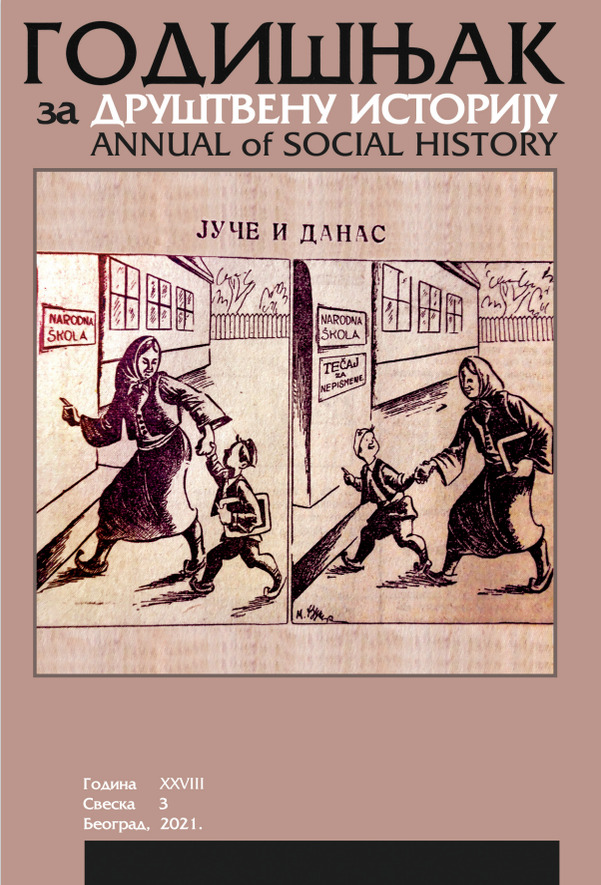Masakr u Talsi: istorija u umetnosti i popularnoj kulturi (1921–2021)
The Tulsa Race Massacre: History in Art and Popular Culture (1921–2021)
Author(s): Simona ČupićSubject(s): Interwar Period (1920 - 1939), Sociology of Art
Published by: Udruženje za društvenu istoriju
Keywords: Tulsa race massacre; racial protests; Mark Bradford; Watchmen; Lovecraft Country
Summary/Abstract: Historical narratives are transferred in various ways, which are often understood – even when this is not the case – as tangible, material remnants of history: objects, paintings, sculp¬tures, memorabilia, films, photographs. The need to make a record of history in the realm of art is most often motivated by the intention to make its contents timeless, universal, to elevate them to the level of symbols. The status of “great” works of art, which are simultaneously political as well, shapes the iconic manner in which the audience understands them. It is this status that gives rise to their visibility in public spaces, and consequently to the preservation of the memories contained within them from violation. Could the Tulsa race massacre of 1921 have remained invisible for almost a century if it had been subjected to an “artistic treatment”? From the moment when, in 2012, Mark Bradford’s painting Scorched Earth was exhibited at The Broad Museum in Los Angeles, it has provided the impetus to speak publicly of disturbing histories, to clarify their context, to expose tragedies and injustices done and suffered to the public eye. In the contemporary world, perhaps the most powerful visibility is commanded by interpretations of history from the domain of mainstream popular culture. Insights gained through googling, tweeting, Wikipediaing, blogging, and “understanding” gained from films and series constitute a major and significant issue. When the first episode of the Watchmen series was broadcast in October 2019, this resulted in the boosting of Google searches pertaining to the event that occurred in Tulsa in 1921. At the same time, when, looking from the perspective of the present, we intervene to correct perceptions of contents from the past, we testify to changes, a triumphant subjugation of history, we perceive that control is exerted over public discourse, popular perception, the system of values, as well as events and individuals who are to be hidden from view and/or cancelled. From multiple presents, multiple histories arise.
Journal: Godišnjak za društvenu istoriju
- Issue Year: XXVIII/2021
- Issue No: 3
- Page Range: 33-49
- Page Count: 17
- Language: Serbian

